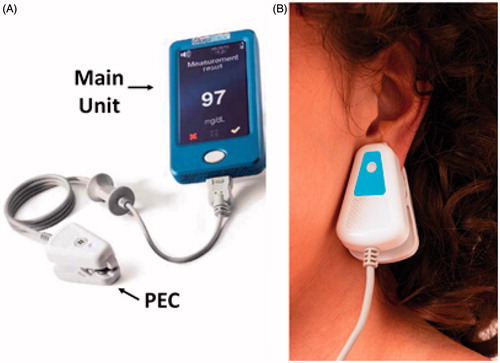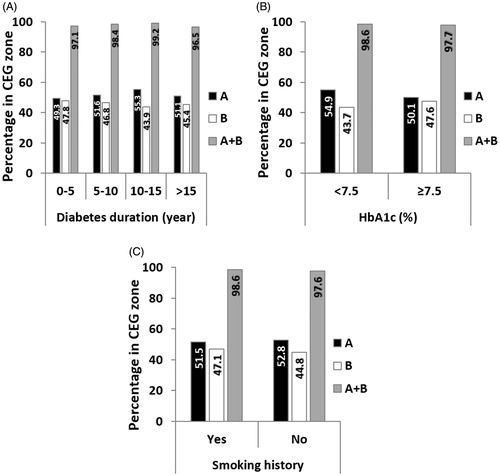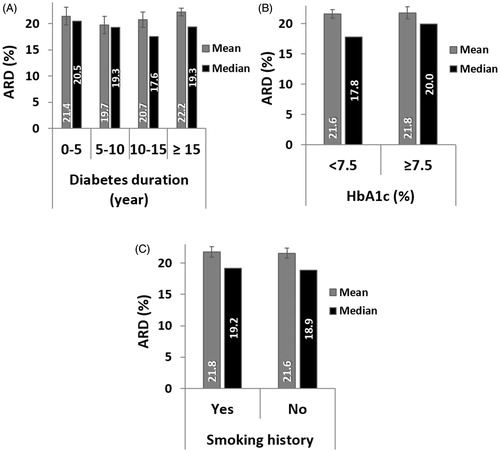Figures & data
Table 1. Participants' clinical characteristics and the number of paired GlucoTrack-invasive readings.
Figure 1. GlucoTrack non-invasive monitoring device. A. The device includes a main unit and three different sensor pairs, one per each of the three technologies, all located at the tip of a personal ear clip (PEC). B. Illustration of glucose measurement performance using GlucoTrack. The PEC is clipped to the earlobe for spot measurement.



